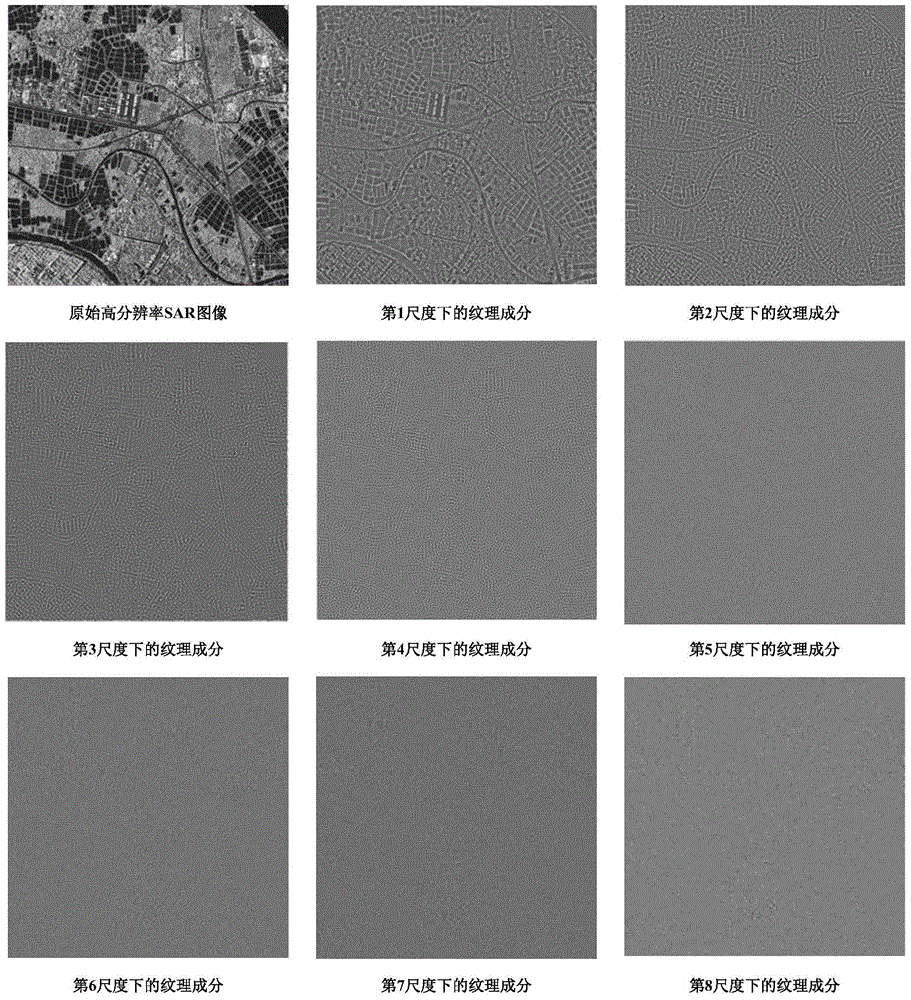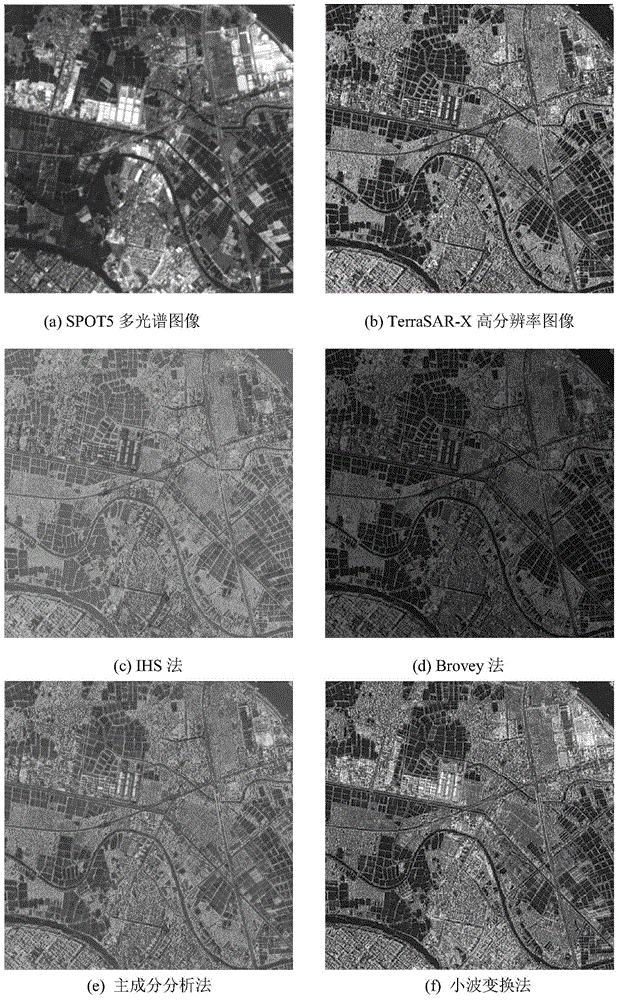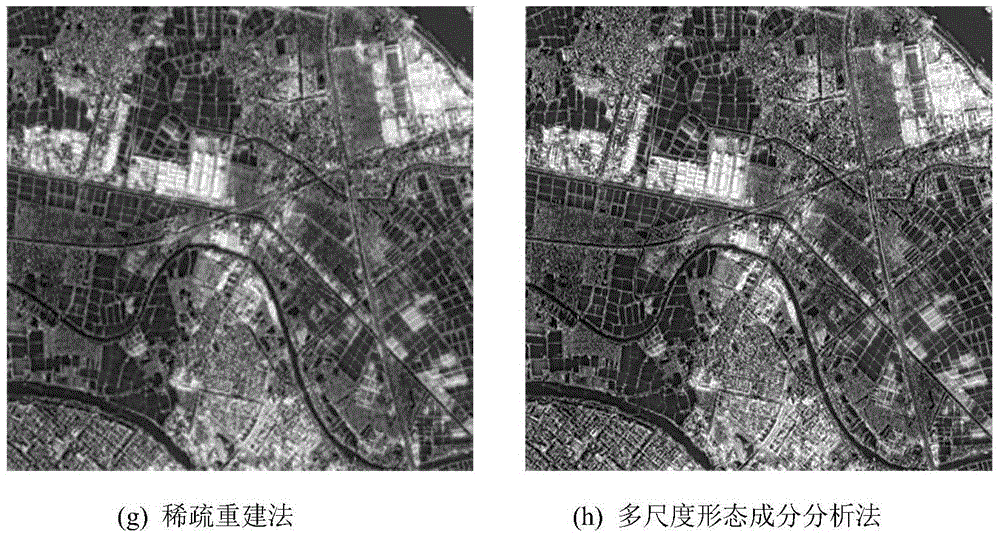Remote sensing image fusion method based on multi-dimensional morphologic element analysis
A morphological component analysis, remote sensing image fusion technology, applied in image enhancement, image data processing, instruments, etc., can solve the problem that large remote sensing images are difficult to put into practical application, wavelet transform analysis method multi-man-made noise, remote sensing image analysis and decomposition are unfavorable, etc. question
- Summary
- Abstract
- Description
- Claims
- Application Information
AI Technical Summary
Problems solved by technology
Method used
Image
Examples
Embodiment Construction
[0022] The curvelet transform base can effectively capture the cartoon component of the image, and the local discrete cosine transform base can effectively capture the texture component of the image. Therefore, the joint curvelet transform basis Φ 1 and local discrete cosine transform basis Φ 2 Decomposition dictionary Φ=[Φ as morphological component analysis 1 ,Φ 2 ], and perform multi-scale morphological component decomposition on high-resolution remote sensing images and multispectral remote sensing images, respectively. Abandon the noise-containing scale part of the high-resolution remote sensing image, and retain the texture components decomposed by other scales; discard the texture components of the multispectral image, and retain the cartoon (segment smoothing) component of the multispectral image under TV constraints. The texture components of the retained high-resolution remote sensing images and the segmented smooth components of the multispectral images are used ...
PUM
 Login to View More
Login to View More Abstract
Description
Claims
Application Information
 Login to View More
Login to View More - R&D
- Intellectual Property
- Life Sciences
- Materials
- Tech Scout
- Unparalleled Data Quality
- Higher Quality Content
- 60% Fewer Hallucinations
Browse by: Latest US Patents, China's latest patents, Technical Efficacy Thesaurus, Application Domain, Technology Topic, Popular Technical Reports.
© 2025 PatSnap. All rights reserved.Legal|Privacy policy|Modern Slavery Act Transparency Statement|Sitemap|About US| Contact US: help@patsnap.com



